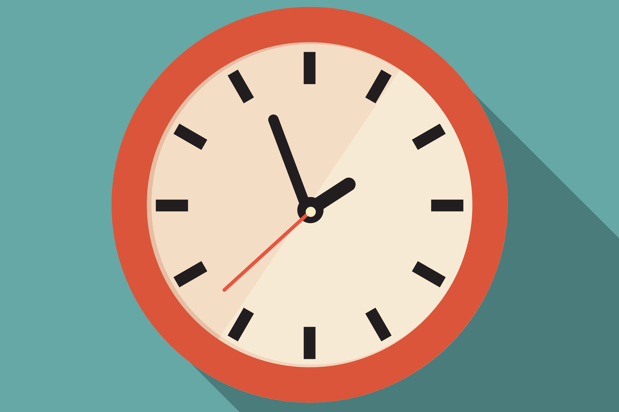
Why Teachers and Administrators Should Take Time for Themselves
Taking breaks at work increases productivity and reduces stress, even if it’s just for 5 minutes. Use these tips to model the healthy practice at your school.

Everyday at the ring of the lunch bell, when I was a teacher in Boston, my colleague would exit the school doors and walk two laps around the campus. She did this whether there was sun in the sky or snow on the ground, and always returned by the end of her lunch break with a smile on her face, ready to teach her next class.
My colleague’s stroll around the school was time she took to focus on herself. Her routine not only gave her the chance to exercise and breathe some fresh air, but it helped her to relax, reflect, and recharge for the second half of the day.
She was onto something: Research from the last few years overwhelming shows that short breaks during long work sessions are key to improving task performance.
Our brains need stimulation, but “constant stimulation is registered by our brains as unimportant, to the point that the brain erases it from our awareness,” said University of Illinois psychology professor Alejandro Lleras, who led a pivotal 2011 study that demonstrated how brief interruptions in activity can improve long-term focus on work.
Mental breaks and brief distractions prevent people from succumbing to exhaustion or inattentiveness. And for those who spend hours at desks, a 2016 study published by the International Journal of Behavioral Nutrition and Physical Activity found that by walking for five minutes at the start of each hour, workers could boost mood, energy, and cognitive function, while staving off hunger and fatigue throughout the day.
Some of the world’s most innovative companies seem to be adapting this research into workplace environments: Facebook has a stroll-friendly rooftop garden at its Menlo Park headquarters; some Google offices around the world are equipped with indoor slides; even ThinkCERCA HQ has ping-pong and foosball tables my colleagues and I use when we need mental breaks.
But while these practices are replicable at startups and large-scale tech companies, the simple fact is that school routines and structures aren’t as adaptable. And in a place of work, employees can feel uncomfortable with the idea of taking time for themselves – even though breaks have a proven, positive impact on productivity.
Therefore, administrators must take the initiative to model how teachers can and should take time for themselves throughout the workday. Of course, this doesn’t necessitate providing a startup environment. We may not be able to put a slide in the teachers’ lounge, but we can show how to take advantage of brief interludes during the workday.
To demonstrate to your colleagues that taking time for themselves is encouraged, try modeling one of the actions below. After all, when we take mental breaks for ourselves, we are more present, happy, and clear – which is beneficial for the students we educate every day.
Looking for ideas? Here are free or very cheap ways you and your team can take time for yourselves during the workday:
If you have five minutes...
- Write down something you’re grateful for on a slip of paper and add it to a “gratitude jar.” When you need a break on another day, read through some of the moments you added to the jar already.
- Do some stretches. The Mayo Clinic even has a guide to simple stretches that can be done at a desk.
- Write a note to a friend on a postcard. On your way home from work, mail it.
If you have 10 minutes...
- Take a short walk outside.
- Brew some coffee or tea – but try not to use the communal kettle or coffeemaker. Instead, use a simple French Press that can sit at your desk.
- Meditate. Looking for a way to get started? Try using the Headspace app, which teaches users how to meditate in 10 minutes each day.
- Take out the colored pencils and work on an adult coloring book.
- Listen to a short podcast segment, like the TED Radio Hour.
- Try a 10-minute yoga session.
If you have 20 minutes...
- Go for a run. If you don’t have after-school PD, an ideal time to run might be when school lets out. When you return, your mind will be fresh and ready to grade some papers.
- Take up a hobby – like knitting, calligraphy, origami, illustration, or embroidery. Crafts that you can do anywhere and that produce a creative result are ideal.
- Plug into your personal zen music and write in a journal.
- Walk a lap or two around the school grounds.
- Listen to a podcast that explores a topic you don’t know much about. The 99% Invisible podcast, for instance, dives into the stories behind aspects of everyday life we don’t think much about.
If you liked this post, you might also enjoy:

A former special education and English teacher, school administrator, and district leader for Boston Public Schools, Kavita is an expert on teacher training, Universal Design for Learning, and bilingual language learners. In addition to her work at ThinkCERCA, Kavita is a Cadre member at the Center for Applied Special Technology, where she teaches courses on UDL and provides training to districts and universities across the U.S.
